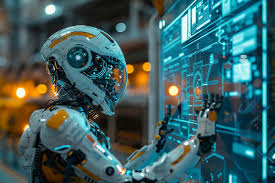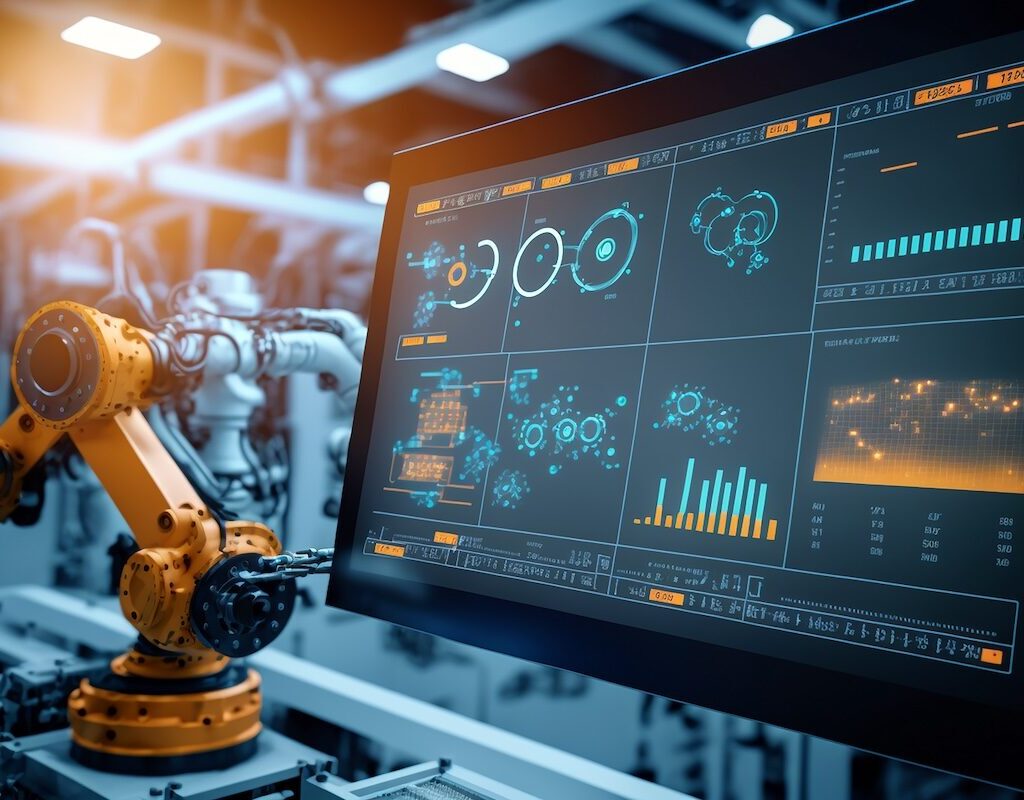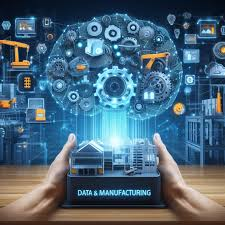Introduction
Sustainability is no longer just a buzzword in manufacturing it’s a necessity. With increasing pressure to reduce carbon footprints, minimize waste, and optimize energy consumption, manufacturers are turning to Artificial Intelligence (AI) for solutions. AI-powered analytics is transforming sustainable manufacturing practices, making production more efficient, cost-effective, and environmentally friendly. But how exactly does AI help? Let’s dive deep into this game-changing technology.
The Role of AI in Sustainable Manufacturing

1. Optimizing Energy Consumption
One of the biggest challenges manufacturers face is high energy consumption. AI-driven analytics can monitor real-time energy usage, predict peak demand periods, and suggest adjustments to minimize waste. Machine learning algorithms can even analyze historical data to optimize energy consumption without compromising productivity.
2. Waste Reduction Through Smart Analytics
Manufacturing processes generate significant waste be it raw materials, defective products, or excess packaging. AI-powered predictive analytics help identify inefficiencies, reduce material wastage, and improve overall yield. By detecting production anomalies early, companies can reduce the number of defective products and cut down on waste.
3. Enhancing Supply Chain Sustainability
A sustainable supply chain is key to achieving eco-friendly manufacturing. AI can optimize logistics by analyzing traffic patterns, reducing fuel consumption, and predicting demand fluctuations to prevent overproduction. AI-powered analytics also enable businesses to track their suppliers’ sustainability practices, ensuring compliance with green standards.
AI-Driven Predictive Maintenance for Eco-Friendly Operations

4. Preventing Equipment Failures
Manufacturing equipment malfunctions lead to downtime, excessive energy use, and resource wastage. AI-powered predictive maintenance uses sensors and machine learning to detect anomalies in equipment performance, allowing companies to fix issues before they escalate.
5. Extending Equipment Lifespan
By continuously analyzing equipment data, AI can provide insights into optimal maintenance schedules. This reduces the need for premature replacements, cutting down on electronic waste and lowering costs associated with buying new machinery.
6. Minimizing Carbon Footprint
Predictive maintenance not only saves money but also reduces a facility’s carbon footprint. Well-maintained equipment runs more efficiently, consuming less energy and reducing greenhouse gas emissions.
AI in Smart Manufacturing and Process Optimization

7. Real-Time Data Processing for Efficiency
AI-powered analytics process vast amounts of data in real-time, providing actionable insights into manufacturing operations. This leads to smarter decision-making, faster response times, and increased production efficiency.
8. Automating Quality Control
Traditional quality control methods can be time-consuming and prone to human error. AI-driven systems use computer vision to detect defects with pinpoint accuracy, ensuring that only high-quality products reach consumers, thus reducing returns and wastage.
9. AI-Powered Robotics for Sustainable Production
AI-integrated robots enhance sustainability by reducing material waste, improving precision, and optimizing assembly lines. These robots can adjust to dynamic production requirements, making them highly efficient and energy-saving.
AI and Green Energy Integration in Manufacturing
10. Renewable Energy Management
AI-driven analytics can predict energy demand and optimize the use of renewable sources such as solar and wind power. By balancing energy loads efficiently, AI helps reduce dependency on fossil fuels.
11. Smart Grid Optimization
Manufacturers leveraging AI can participate in smart grids, adjusting their energy usage based on grid demand. This ensures a more sustainable distribution of electricity, reducing overall environmental impact.
12. Carbon Emission Tracking and Reduction
AI-powered tools can measure and track carbon emissions at every stage of production. Advanced analytics help manufacturers set realistic sustainability goals and monitor progress, ensuring compliance with environmental regulations.
Overcoming Challenges in AI-Driven Sustainable Manufacturing

13. Data Security and Privacy Concerns
AI relies heavily on data collection, which raises concerns about security and privacy. Companies must implement robust cybersecurity measures to protect sensitive manufacturing data.
14. High Initial Investment Costs
Although AI adoption comes with upfront costs, the long-term benefits such as energy savings and waste reduction—outweigh the expenses. Government incentives and grants can help manufacturers invest in AI-driven sustainability.
15. Workforce Adaptation and Training
AI-powered systems require skilled workers to operate and maintain them. Providing proper training and upskilling employees ensures a smooth transition toward AI-driven sustainable manufacturing.
Real Ways to Make Money Online from Home (For Free!) in 2024
Conclusion
AI-powered analytics is revolutionizing sustainable manufacturing by optimizing energy consumption, reducing waste, enhancing supply chain efficiency, and promoting green energy integration. While challenges exist, the long-term benefits far outweigh the hurdles. As industries continue to adopt AI-driven solutions, we can expect a future where manufacturing is not only smarter but also significantly more sustainable.
FAQs
1. How does AI improve energy efficiency in manufacturing?
AI analyzes real-time energy consumption data, predicts peak demand, and optimizes energy use, reducing waste and lowering costs.
2. Can AI help reduce manufacturing waste?
Yes, AI-powered predictive analytics detect inefficiencies, reduce defects, and optimize material usage, leading to minimal waste production.
3. What role does AI play in carbon footprint reduction?
AI tracks carbon emissions, optimizes energy usage, and integrates renewable energy sources, helping manufacturers reduce their environmental impact.
4. Is AI in manufacturing expensive to implement?
While the initial investment is high, the long-term cost savings from reduced waste, energy efficiency, and predictive maintenance make it worthwhile.
5. How can manufacturers prepare for AI-driven sustainability?
Companies should invest in AI training programs, upgrade their infrastructure, and explore government incentives for sustainable manufacturing initiatives.
Meta Description: Discover how AI-powered analytics is transforming sustainable manufacturing by optimizing energy use, reducing waste, and improving efficiency.

